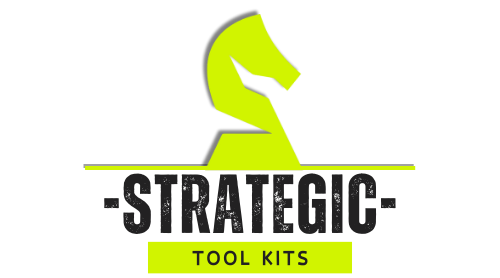Scaling up in business means growing your company in a way that is sustainable, profitable, and efficient, not just increasing sales or headcount.
According to the Kauffman Foundation (2024), fewer than 10% of startups actually succeed in scaling, while most remain small businesses or fail due to growing too quickly without systems in place.
In simple terms, scaling is the shift from surviving to thriving: it is when your business model, operations, and resources are prepared to handle growth without collapsing under pressure.
For example, doubling sales is growth. But if doubling sales also doubles costs, stress, and inefficiencies, you are not scaling; you are just getting bigger.
Scaling is when you can handle that same increase in customers with only a moderate increase in costs, thanks to streamlined systems, automation, or improved processes.
Done right, scaling leads to higher margins, stronger market presence, and resilience in competitive industries.
Growth vs. Scaling: Why the Distinction Matters
View this post on Instagram
Many entrepreneurs confuse growth with scaling. Growth often requires adding resources at the same rate as revenue (e.g., more employees, more equipment, more office space).
Scaling, on the other hand, is about exponential returns. A scalable business can serve ten times more customers without needing ten times more resources.
Aspect
Business Growth
Business Scaling
Definition
Linear increase in revenue + resources
Exponential increase in revenue with controlled costs
Example
Hire 5 more employees to serve 5 more clients
Use automation to serve 50 more clients with the same team
Cost Impact
Costs rise at the same pace as revenue
Costs rise more slowly than revenue
Outcome
Bigger business, same efficiency
Stronger business, higher efficiency
The Building Blocks of Scaling

1. A Proven Business Model
Before scaling, your product or service must already be validated by the market. According to CB Insights (2025), 42% of startups fail because they scale too early, before confirming demand.
That means investing heavily in marketing, hiring, or expanding before they know customers truly want what they are selling.
2. Financial Readiness
Scaling requires capital. Even with efficient systems, you need cash for technology, talent, and expansion. Companies that scale successfully usually reinvest profits or secure funding at the right moment.
A report by PitchBook (2024) showed that businesses with clear reinvestment strategies had 30% higher survival rates after scaling compared to those relying solely on external funding.
3. Operational Efficiency
Processes must be standardized and repeatable. For example, a bakery can’t scale if each cake requires unique ingredients and manual handling.
Instead, they create site MS, standard recipes, and automated equipment contracts that allow consistency at larger volumes.
4. Technology and Automation
Digital tools play a massive role in scaling. Cloud platforms, AI-driven analytics, and CRM systems allow businesses to serve more customers without significantly increasing overhead.
For instance, satellite internet has recently become an enabler for scaling rural businesses that previously lacked reliable online access. With better connectivity, small firms in remote areas can now reach global markets without relocating.
5. Talent and Leadership
Scaling is not just about hiring more people; it’s about building teams that can grow into leadership roles. Delegation, culture, and leadership development are crucial.
A Deloitte study (2023) found that companies investing in leadership pipelines scale 1.8× faster than those that don’t.
Steps to Scale Your Business the Right Way
Step 1: Strengthen Your Core Operations
Fix inefficiencies before expanding. If your supply chain is weak, scaling will magnify problems.
Step 2: Build Scalable Systems
Invest in software, automation, and repeatable processes. For example, using an ERP (Enterprise Resource Planning) system ensures departments communicate smoothly, reducing bottlenecks.
Step 3: Diversify Revenue Streams
Businesses that rely on one product line often hit ceilings. Adding complementary services or products spreads risk and fuels growth.
Step 4: Secure Funding Wisely
Seek capital when you have a clear scaling plan, not just when money runs out. This gives you leverage with investors and prevents desperate deals.
Step 5: Expand Markets Strategically
Scaling too broadly can be dangerous. Instead of expanding everywhere, test new markets with pilot programs. For example, a local clothing brand might test e-commerce shipping to one foreign country before going global.
Common Pitfalls of Scaling (Expanded)

1. Scaling Too Early
One of the most common reasons companies fail is jumping into large-scale operations before their product or service has proven real market demand. Many startups are fueled by enthusiasm and investor money, which can create a false sense of security.
They invest heavily in advertising, open new offices, or hire large teams without having a stable customer base. This rush to grow leads to unsustainable burn rates.
2. Ignoring Company Culture
Rapid hiring is inevitable during scaling, but if culture is neglected, misalignment spreads quickly. When teams expand too fast without clear values, training, or leadership consistency, collaboration breaks down.
Toxic microcultures can develop in different departments, leading to low morale, high turnover, and productivity loss.
3. Overdependence on Funding
Many businesses scale by leaning too heavily on external investment. This works while funding flows, but creates a fragile model.
If profitability is not built into the core business, operations collapse the moment investors pull back. True scaling requires balancing growth with self-sufficiency.
4. Weak Infrastructure
Even with a great product and strong demand, businesses can crumble if their infrastructure cannot handle scale. Infrastructure includes everything from IT systems and logistics networks to supply chain resilience and customer support. Scaling multiplies demand, and without scalable systems, bottlenecks appear everywhere.
Real-World Examples

Amazon: The Blueprint for Successful Scaling
Amazon’s journey is often cited as the gold standard of scaling. In the early days, Jeff Bezos kept the business focused on one niche, books, while simultaneously investing in infrastructure that could support long-term expansion.
Unlike many startups that grow only in response to demand, Amazon scaled by building ahead of demand. Key strategic moves included investing in logistics networks (warehouses, delivery systems), creating AWS cloud services that reduced costs and generated new revenue, and adopting automation and AI in customer service.
This meant that when sales volume skyrocketed, Amazon’s costs did not increase at the same pace. Every stage of growth made the company stronger and more efficient. Today, Amazon serves hundreds of millions of customers worldwide, yet continues to scale into new industries without losing operational control.
WeWork: A Lesson in Failed Scaling
WeWork is a textbook example of scaling gone wrong. The company started with a simple, appealing concept: shared workspaces.
However, instead of refining its model and focusing on profitability, WeWork pursued hyper-growth. They opened offices in dozens of cities at breakneck speed, driven largely by venture capital rather than actual customer demand.
The business model relied heavily on long-term lease commitments, while revenue was tied to short-term tenant agreements. This mismatch created massive financial risk. As leadership expanded the company aggressively, cultural and managerial issues emerged, and investor confidence eroded.
By 2019, despite being valued at nearly $47 billion, WeWork’s attempt at an IPO collapsed, and the company was forced into restructuring. The lesson: scaling without sustainable economics and leadership discipline can lead to spectacular failure, no matter how trendy the brand.
Conclusion
@tomferryWant to scale and stay lean? It comes down to 8 rules: smart hires, speed, high margins, and products people actually pay for. I break it all down in Episode 5 of Growth Mode. Watch full episode on my YT♬ original sound – Tom Ferry
Scaling up is not just “getting bigger.” It’s a strategic transition where your business model, systems, and leadership prove they can handle growth without breaking down.
According to Harvard Business Review (2024), the companies that scale successfully combine efficiency, adaptability, and strong customer focus.
The real measure of scaling is when every new unit of growth makes your business stronger, not weaker.

